1. The fitness boom has arrived in China!
China is all about sports, not least because of the Winter Olympics in February 2022. Social networks, e-commerce and the Chinese government are driving the fitness boom in China. At the forefront: influencers like Liu Genghong, who offers the Chinese an online workout at home via livestream.
The trend is reflected in statistics such as the total production value of the sports industry. The number of gyms in China has increased dramatically in recent years, as has the estimated number of about 435 million people actively participating in the fitness boom.
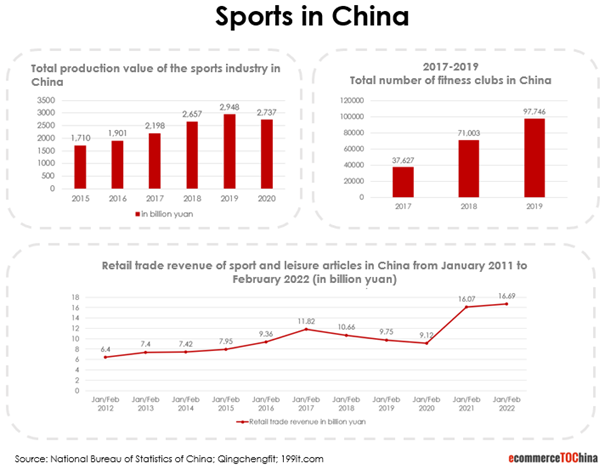
2. How does this boom happen?
Governmental Support, the Winter Olympics and the Pandemic contribute to the fitness hype in China!
The hype surrounding the Winter Olympics has captivated the whole of China. In order to be at the forefront worldwide, the Chinese government has invested a lot in the recruitment of athletes and strengthened the national awareness of sports. The focus is on the 14th Five Year Plan for Sports Development, which covers the years 2021 to 2025. The National Fitness Plan envisions 38.5% of the population participating in regular sports by 2025, an increase of 1.3% over the previous 5-year plan.
The plan behind it is ambitious: Thousands of sports venues will be built, sports instructors will be trained, and everyone will be able to reach a sports facility within a 15-minute walk. At the same time, the plan aims to increase the value of the sports industry to US$784.8 billion.
Additionally, the plan is coupled with other health issues. According to the Chinese Center for Disease Control and Prevention, 19% of Chinese between 6 and 17 suffer from obesity. In addition to physical health, mental health also plays an important role.
Due to the Covid-19, many Chinese felt the need to pay more attention to their physical and mental health. In addition to a healthy diet, this also included sports. Since most of the gyms were closed, new, innovative ideas emerged.
This sports app stands out: Keep
The pandemic has left its mark on the fitness industry. The market for home workouts has grown rapidly, and one app stands out: Keep.
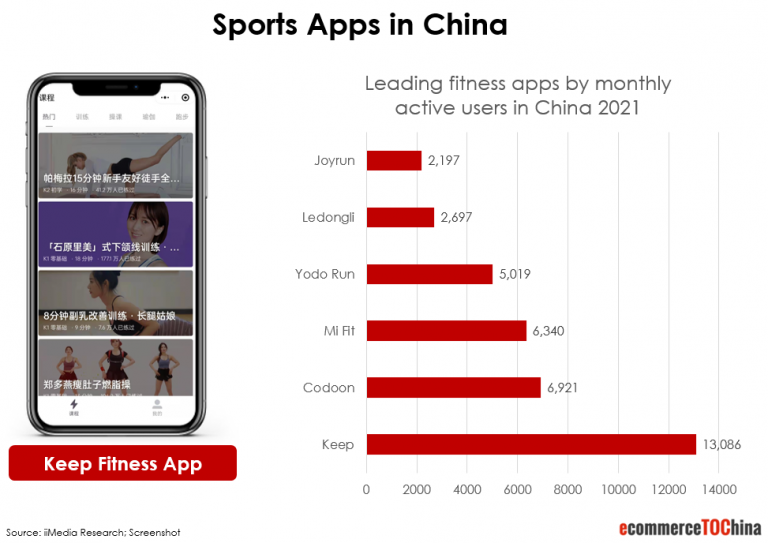
Keep combines all aspects of classic sports apps into one. You can create workout plans, do home workouts, join interactive classes, share successes with your friends, and most recently, order and have sports equipment delivered directly through Keep. For a paid membership, you also get personalized training. Especially popular with Chinese netizens is the social media aspect, as well as the all-in-one features of Keep. In February 2022, the company has filed for an initial public offering (IPO) in Hong Kong. Before, it reportedly pulled out of plans for an IPO in the USA in 2021.
Fitness and Influencers get people moving in China's living rooms
The man who has brought fitness into the rooms of the Chinese is called Liu Genghong. The 49-year-old trainer is going viral with his live sports streams. Due to the ongoing corona lockdowns in parts of China, people were looking for indoor workout alternatives to keep fit and healthy. This was the perfect moment for Liu, who was able to gain more than 60 million Douyin (Chinese version of TikTok) followers in just one month. Together with his wife, who is not a fitness professional like Liu himself, they quickly became as popular on Chinese Social Media as the live-streaming KOL Austin Li, the so-called Lipstick King.
Now Liu offers a regular program of in total five workouts a week. Liu is also setting new standards in terms of collaborations and livestream sales. In one of his workouts, Liu wore FILA brand sports shorts. Even though it was not a great promotion, it is said that Liu earned up to $2.5 million in two days. In addition to Liu, there are many other fitness influencers and live streamers who are fueling the fitness trend across China.
Last but not least, foreign fitness coaches have also taken notice of the Chinese hype. For example, German influencer Pamela Reif also offers her workouts on the platform Keep.
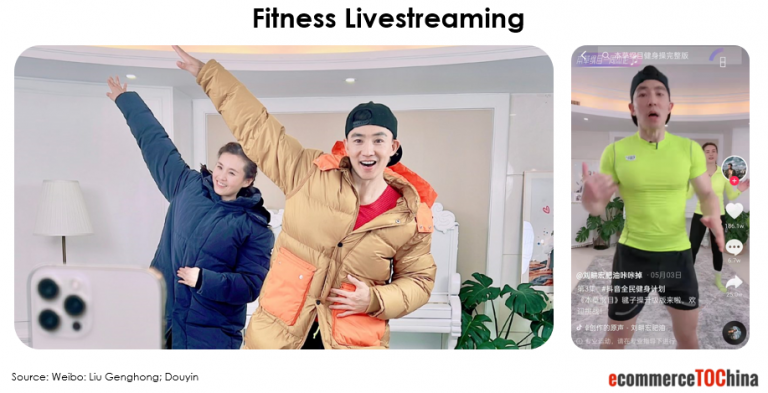
Fashion collaborations and pop-up stores emerge
Luxury fashion brands have also caught on to the incredible hype around fitness in China. French company Hermès, for example, has offered a pop-up fitness center where interested ones could browse and buy the brand’s products, but also take part in fitness classes such as belt stretching or square scarf yoga. The store was bookable online and lasted three days in the city of Chengdu. Previously, the company had shared exercise tutorials on its own WeChat mini program.
In general, there are more and more collaborations between sports manufacturers and fashion brands. The Canadian company Lululemon, which is known for yoga clothing, partnered with Keep in 2019. Together, both brands have offered yoga classes on the app. For those who participated in the online courses for 21 days in a row, there was a professional yoga mat as a gift, in addition, money was donated to charity project. The success is reflected in the sales of the company, which has a growth rate of 70% in China at the end of 2021, within two years.
But how do sports fit in with the sense of a slow lifestyle or “Lie Flat Culture” (躺平)? Anta, a Chinese sports brand, had a revenue of $5.87 billion in 2021. In comparison, sporting goods manufacturer Nike had sales of $6.07 billion in China. Anta’s latest campaign targeted the slow lifestyle and Chinese tea culture. With more and more young Chinese showing interest in the traditional tea ceremony and consuming more tea, Anta brought the traditional tea ceremony into one of its shoe stores. Through the social interaction of the tea ceremony, customers could see and try the new and innovative, but also sustainable shoes.
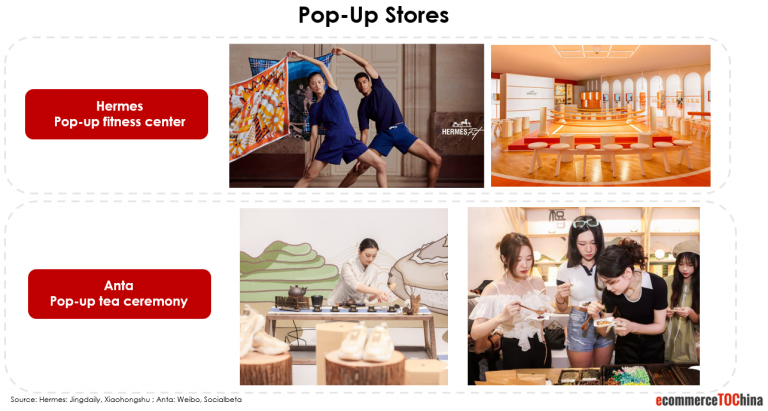
New concepts tried to accelerate the hype in the past
Already a few years ago, new concepts tried to fuel the fitness trend in China. As an alternative to the rather expensive memberships in gyms, there was the idea to provide public small “micro gyms” similar to the bicycles, which can be found on the streets and shared. In the mini gyms, people could exercise around the clock on around, but in a very limited space. This was charged per minute (0.2 yuan per minute), so that an hour cost about 1.70€.
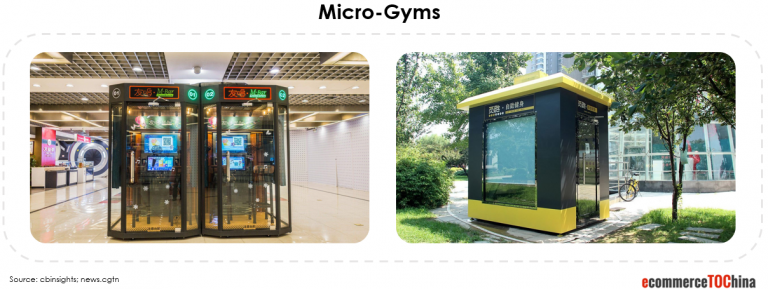
However, not least due to Western influences, interest in the classic gym also increased, which became more lucrative over time. Another new approach of many gyms was “paying-per-workout”. Instead of a long contract, users could pay per use.
3. Conclusion:
The fitness boom in China has a long history. Although gyms were not fully accepted and often visited in the beginning, influencers and new concepts have helped more and more Chinese to exercise regularly. Plans on the part of the government have also ensured that sports education is promoted, and events such as the Winter Olympics have sparked interest among the general population.
Last but not least, body positivity and a healthy lifestyle have further encouraged interest. Especially due to the Corona pandemic, many Chinese craved a healthier lifestyle, and brought at-home fitness on their watch. Fashion brands such as Hermès or sporting goods manufacturers such as Anta are coming up with new, innovative collaborations or pop-up stores to generate new sales ideas, not only boosting interest in the sport but also their sales figures.
Want to have a first free consultation session about how to do marketing in China? Contact us.
